§á§â§Ö§Ù§Ö§ß§ä§Ñ§è§Ú§ñ §á§â§Ú§Ó§ñ§Ù§Ü§Ñ §Þ§à§Õ§Ö§Ý§Ú §Ú §Ó§Ñ§Ý§Ú§Õ§Ñ§è§Ú§ñ §Õ§Ñ§ß§ß§í§ç
0 likes2,743 views
§á§â§Ú§Ó§ñ§Ù§Ü§Ñ §Þ§à§Õ§Ö§Ý§Ú §Ú §Ó§Ñ§Ý§Ú§Õ§Ñ§è§Ú§ñ §Õ§Ñ§ß§ß§í§ç
1 of 10
Downloaded 20 times
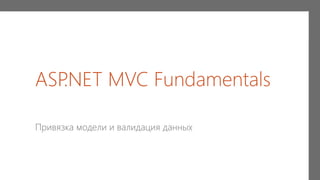
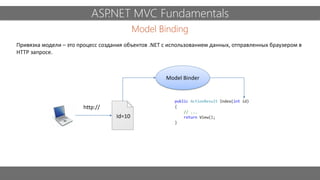


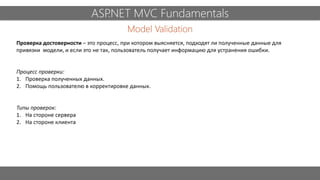
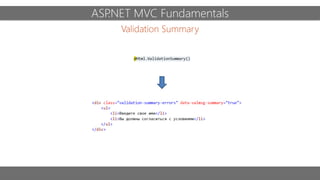
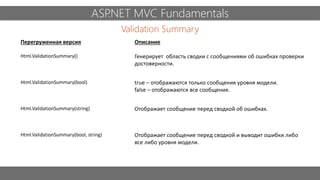
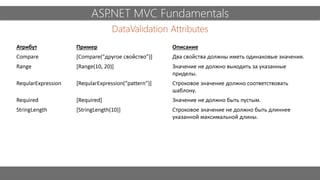

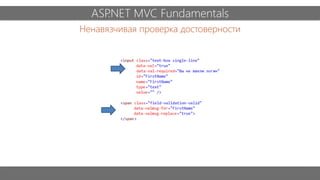
Ad
Recommended
05 c§Ö§â§Ó§Ö§â§ß§í§Ö §ï§Ý§Ö§Þ§Ö§ß§ä§í §å§á§â§Ñ§Ó§Ý§Ö§ß§Ú§ñ §á§â§Ö§Ù§Ö§ß§ä§Ñ§è§Ú§ñ
05 c§Ö§â§Ó§Ö§â§ß§í§Ö §ï§Ý§Ö§Þ§Ö§ß§ä§í §å§á§â§Ñ§Ó§Ý§Ö§ß§Ú§ñ §á§â§Ö§Ù§Ö§ß§ä§Ñ§è§Ú§ñsivorka
?
c§Ö§â§Ó§Ö§â§ß§í§Ö §ï§Ý§Ö§Þ§Ö§ß§ä§í §å§á§â§Ñ§Ó§Ý§Ö§ß§Ú§ñ §á§â§Ö§Ù§Ö§ß§ä§Ñ§è§Ú§ñ04 managing the database
04 managing the database§®§Ñ§â§Ú§ß§Ñ §¢§à§ã§à§Ó§Ñ
?
This document provides an overview of managing databases using Entity Framework Core and Code First Migrations. It discusses using the Fluent API for mapping entity classes to database tables. Code First Migrations allows managing the development cycle between code and the database by generating scripts to synchronize schema changes. Migrations create snapshots of the database that allow migrating and scripting SQL changes between different points in development.Mva stf module 6 - rus
Mva stf module 6 - rusMaxim Shaptala
?
§¥§à§Ü§å§Þ§Ö§ß§ä §á§â§Ö§Õ§ã§ä§Ñ§Ó§Ý§ñ§Ö§ä §ã§à§Ò§à§Û §Ü§å§â§ã §á§à §Ñ§Ó§ä§à§Þ§Ñ§ä§Ú§Ù§Ñ§è§Ú§Ú §ä§Ö§ã§ä§Ú§â§à§Ó§Ñ§ß§Ú§ñ, §à§ç§Ó§Ñ§ä§í§Ó§Ñ§ð§ë§Ú§Û §ä§Ö§Þ§í, §ä§Ñ§Ü§Ú§Ö §Ü§Ñ§Ü §à§ã§ß§à§Ó§ß§í§Ö §á§â§Ú§ß§è§Ú§á§í §ä§Ö§ã§ä§Ú§â§à§Ó§Ñ§ß§Ú§ñ, §Þ§Ö§ä§à§Õ§í §â§Ñ§Ò§à§ä§í §ã §Ò§Ñ§Ô§Ñ§Þ§Ú, §â§Ñ§Ù§â§Ñ§Ò§à§ä§Ü§Ñ §ä§Ö§ã§ä§à§Ó §Ú §å§á§â§Ñ§Ó§Ý§Ö§ß§Ú§Ö §ä§Ö§ã§ä§à§Ó§í§Þ§Ú §ã§Ü§â§Ú§á§ä§Ñ§Þ§Ú. §°§ß §à§Ò§ã§å§Ø§Õ§Ñ§Ö§ä §á§â§Ö§Ú§Þ§å§ë§Ö§ã§ä§Ó§Ñ §Ú §ß§Ö§Õ§à§ã§ä§Ñ§ä§Ü§Ú §Ñ§Ó§ä§à§Þ§Ñ§ä§Ú§Ù§Ú§â§à§Ó§Ñ§ß§ß§í§ç §ä§Ö§ã§ä§à§Ó, §Ñ §ä§Ñ§Ü§Ø§Ö §ã§ä§â§Ñ§ä§Ö§Ô§Ú§Ú §ß§Ñ§á§Ú§ã§Ñ§ß§Ú§ñ §Ú §á§â§Ú§à§â§Ú§ä§Ú§Ù§Ñ§è§Ú§Ú §ä§Ö§ã§ä§à§Ó. §°§ã§à§Ò§à§Ö §Ó§ß§Ú§Þ§Ñ§ß§Ú§Ö §å§Õ§Ö§Ý§ñ§Ö§ä§ã§ñ §Ú§ã§á§à§Ý§î§Ù§à§Ó§Ñ§ß§Ú§ð §Ó§Ú§â§ä§å§Ñ§Ý§î§ß§í§ç §Þ§Ñ§ê§Ú§ß §Ú §Ý§Ñ§Ò§à§â§Ñ§ä§à§â§ß§í§ç §ã§â§Ö§Õ §Õ§Ý§ñ §ï§æ§æ§Ö§Ü§ä§Ú§Ó§ß§à§Ô§à §ä§Ö§ã§ä§Ú§â§à§Ó§Ñ§ß§Ú§ñ §á§â§à§Ô§â§Ñ§Þ§Þ§ß§à§Ô§à §à§Ò§Ö§ã§á§Ö§é§Ö§ß§Ú§ñ.03 managing relationships
03 managing relationships§®§Ñ§â§Ú§ß§Ñ §¢§à§ã§à§Ó§Ñ
?
This document discusses different types of relationships in Entity Framework including one-to-many, one-to-one, and many-to-many. It explains how to model each relationship type by adding properties and attributes to classes and how Entity Framework handles lazy loading by default. It also demonstrates creating each relationship type through code examples.Mva stf module 5 - rus
Mva stf module 5 - rusMaxim Shaptala
?
§¥§à§Ü§å§Þ§Ö§ß§ä §à§ç§Ó§Ñ§ä§í§Ó§Ñ§Ö§ä §à§ã§ß§à§Ó§í §ä§Ö§ã§ä§Ú§â§à§Ó§Ñ§ß§Ú§ñ §á§â§à§Ô§â§Ñ§Þ§Þ§ß§à§Ô§à §à§Ò§Ö§ã§á§Ö§é§Ö§ß§Ú§ñ, §Ó§Ü§Ý§ð§é§Ñ§ñ §Þ§Ö§ä§à§Õ§à§Ý§à§Ô§Ú§Ú, §å§á§â§Ñ§Ó§Ý§Ö§ß§Ú§Ö §Ø§Ú§Ù§ß§Ö§ß§ß§í§Þ §è§Ú§Ü§Ý§à§Þ §Ú §Ñ§Ó§ä§à§Þ§Ñ§ä§Ú§Ù§Ñ§è§Ú§ð §ä§Ö§ã§ä§Ú§â§à§Ó§Ñ§ß§Ú§ñ. §°§ß §á§à§Õ§â§à§Ò§ß§à §â§Ñ§ã§ã§Þ§Ñ§ä§â§Ú§Ó§Ñ§Ö§ä §á§â§à§è§Ö§ã§ã §â§Ñ§Ò§à§ä§í §ã §à§ê§Ú§Ò§Ü§Ñ§Þ§Ú, §ä§Ñ§Ü§Ú§Þ §Ü§Ñ§Ü §â§Ö§Ô§Ú§ã§ä§â§Ñ§è§Ú§ñ, §á§â§Ú§à§â§Ú§ä§Ú§Ù§Ñ§è§Ú§ñ §Ú §Ù§Ñ§Ü§â§í§ä§Ú§Ö §Õ§Ö§æ§Ö§Ü§ä§à§Ó, §Ñ §ä§Ñ§Ü§Ø§Ö §Ú§ß§ã§ä§â§å§Þ§Ö§ß§ä§í, §Ú§ã§á§à§Ý§î§Ù§å§Ö§Þ§í§Ö §Õ§Ý§ñ §å§á§â§Ñ§Ó§Ý§Ö§ß§Ú§ñ §ä§Ö§ã§ä§Ñ§Þ§Ú, §ä§Ñ§Ü§Ú§Ö §Ü§Ñ§Ü Microsoft Test Manager §Ú Team Foundation Server. §°§ã§à§Ò§à§Ö §Ó§ß§Ú§Þ§Ñ§ß§Ú§Ö §å§Õ§Ö§Ý§ñ§Ö§ä§ã§ñ §â§Ñ§Ù§Ý§Ú§é§Ú§ñ§Þ §Þ§Ö§Ø§Õ§å §â§å§é§ß§í§Þ §Ú §Ñ§Ó§ä§à§Þ§Ñ§ä§Ú§Ù§Ú§â§à§Ó§Ñ§ß§ß§í§Þ §ä§Ö§ã§ä§Ú§â§à§Ó§Ñ§ß§Ú§Ö§Þ, §Ñ §ä§Ñ§Ü§Ø§Ö §Ó§Ñ§Ø§ß§à§ã§ä§Ú §å§á§â§Ñ§Ó§Ý§Ö§ß§Ú§ñ §à§ê§Ú§Ò§Ü§Ñ§Þ§Ú §Õ§Ý§ñ §à§Ò§Ö§ã§á§Ö§é§Ö§ß§Ú§ñ §Ü§Ñ§é§Ö§ã§ä§Ó§Ñ §á§â§à§Ô§â§Ñ§Þ§Þ§ß§à§Ô§à §á§â§à§Õ§å§Ü§ä§Ñ.02 beginning code first
02 beginning code first§®§Ñ§â§Ú§ß§Ñ §¢§à§ã§à§Ó§Ñ
?
The document discusses Code First, an approach in Entity Framework for defining a model and mapping it to a database. It covers creating classes, adding attributes for database mapping, creating a data context, and initializing the database. Code First allows defining classes as normal and uses conventions to map them to database tables, while attributes and the fluent API provide control over the mapping.§ß§Ñ§Ó§Ú§Ô§Ñ§è§Ú§ñ §Ú §Ó§Ñ§Ý§Ú§Õ§Ñ§ä§à§â§í §á§â§Ö§Ù§Ö§ß§ä§Ñ§è§Ú§ñ
§ß§Ñ§Ó§Ú§Ô§Ñ§è§Ú§ñ §Ú §Ó§Ñ§Ý§Ú§Õ§Ñ§ä§à§â§í §á§â§Ö§Ù§Ö§ß§ä§Ñ§è§Ú§ñsivorka
?
§ß§Ñ§Ó§Ú§Ô§Ñ§è§Ú§ñ §Ú §Ó§Ñ§Ý§Ú§Õ§Ñ§ä§à§â§í §á§â§Ö§Ù§Ö§ß§ä§Ñ§è§Ú§ñ06 integrating extra features and looking forward
06 integrating extra features and looking forward§®§Ñ§â§Ú§ß§Ñ §¢§à§ã§à§Ó§Ñ
?
This document discusses various topics related to integrating extra features into Entity Framework, including stored procedures, concurrency detection, best practices, and new features in Entity Framework 7. Stored procedures can provide a single point of access control and help limit dynamic SQL queries. Concurrency conflicts can be detected by adding a timestamp property to entities. Best practices include using Include to eager load related data and disposing of database contexts properly. Entity Framework 7 brings performance improvements and support for additional platforms and data stores.01 introduction to entity framework
01 introduction to entity framework§®§Ñ§â§Ú§ß§Ñ §¢§à§ã§à§Ó§Ñ
?
This document introduces Adam Tuliper and Christopher Harrison from Microsoft and provides an overview of their session on implementing Entity Framework with MVC. The session will cover introducing Entity Framework, beginning code first development, managing relationships and transactions, and integrating additional features. Attendees will learn how to use Entity Framework to access and manage data in an MVC application.05 managing transactions
05 managing transactions§®§Ñ§â§Ú§ß§Ñ §¢§à§ã§à§Ó§Ñ
?
This document provides an overview of managing transactions and concurrency in web applications. It discusses how web applications are stateless and how Entity Framework tracks changes to entities. It also covers different approaches for concurrency, including optimistic concurrency using timestamps and custom properties, as well as using transactions to maintain data consistency across multiple requests. Demo code examples are provided for modifying and deleting entities, optimistic concurrency, and custom transactions.Testing po
Testing poMarina Bosova
?
§¥§à§Ü§å§Þ§Ö§ß§ä §à§ç§Ó§Ñ§ä§í§Ó§Ñ§Ö§ä §â§Ñ§Ù§Ý§Ú§é§ß§í§Ö §ï§ä§Ñ§á§í §Ú §ã§ä§â§Ñ§ä§Ö§Ô§Ú§Ú §ä§Ö§ã§ä§Ú§â§à§Ó§Ñ§ß§Ú§ñ §á§â§à§Ô§â§Ñ§Þ§Þ§ß§à§Ô§à §à§Ò§Ö§ã§á§Ö§é§Ö§ß§Ú§ñ, §Ó§Ü§Ý§ð§é§Ñ§ñ §Þ§à§Õ§å§Ý§î§ß§à§Ö, §Ú§ß§ä§Ö§Ô§â§Ñ§è§Ú§à§ß§ß§à§Ö §Ú §ã§Ú§ã§ä§Ö§Þ§ß§à§Ö §ä§Ö§ã§ä§Ú§â§à§Ó§Ñ§ß§Ú§Ö. §°§á§Ú§ã§Ñ§ß§í §Þ§Ö§ä§à§Õ§í §é§Ö§â§ß§à§Ô§à §Ú §Ò§Ö§Ý§à§Ô§à §ñ§ë§Ú§Ü§Ñ, §Ñ §ä§Ñ§Ü§Ø§Ö §á§â§Ú§Ü§Ý§Ñ§Õ§ß§í§Ö §ã§ä§â§Ñ§ä§Ö§Ô§Ú§Ú §Õ§Ý§ñ §ä§Ö§ã§ä§Ú§â§à§Ó§Ñ§ß§Ú§ñ §á§â§à§Ô§â§Ñ§Þ§Þ §ã §Ü§à§ß§Ü§â§Ö§ä§ß§í§Þ§Ú §á§â§Ú§Þ§Ö§â§Ñ§Þ§Ú. §±§â§Ú§Ó§Ö§Õ§Ö§ß§í §Ù§Ñ§Õ§Ñ§ß§Ú§ñ, §Ü§Ñ§ã§Ñ§ð§ë§Ú§Ö§ã§ñ §â§Ö§Ñ§Ý§Ú§Ù§Ñ§è§Ú§Ú §Ú §ä§Ö§ã§ä§Ú§â§à§Ó§Ñ§ß§Ú§ñ §ã§Ú§ã§ä§Ö§Þ§í §Ó§Ö§Õ§Ö§ß§Ú§ñ §Ò§Ñ§Ù§í §Õ§Ñ§ß§ß§í§ç §à §á§à§ã§Ö§ë§Ö§ß§Ú§Ú §Ù§Ñ§ß§ñ§ä§Ú§Û §ã§ä§å§Õ§Ö§ß§ä§à§Ó.Mva stf module 1 - rus
Mva stf module 1 - rusMaxim Shaptala
?
§¥§à§Ü§å§Þ§Ö§ß§ä §à§ç§Ó§Ñ§ä§í§Ó§Ñ§Ö§ä §à§ã§ß§à§Ó§ß§í§Ö §Ñ§ã§á§Ö§Ü§ä§í §ä§Ö§ã§ä§Ú§â§à§Ó§Ñ§ß§Ú§ñ §á§â§à§Ô§â§Ñ§Þ§Þ§ß§à§Ô§à §à§Ò§Ö§ã§á§Ö§é§Ö§ß§Ú§ñ, §Ó§Ü§Ý§ð§é§Ñ§ñ §Þ§Ö§ä§à§Õ§à§Ý§à§Ô§Ú§Ú, §å§á§â§Ñ§Ó§Ý§Ö§ß§Ú§Ö §Ø§Ú§Ù§ß§Ö§ß§ß§í§Þ §è§Ú§Ü§Ý§à§Þ §Ú §Ñ§Ó§ä§à§Þ§Ñ§ä§Ú§Ù§Ñ§è§Ú§ð §ä§Ö§ã§ä§Ú§â§à§Ó§Ñ§ß§Ú§ñ. §°§ß §á§à§Õ§é§Ö§â§Ü§Ú§Ó§Ñ§Ö§ä §Ó§Ñ§Ø§ß§à§ã§ä§î §Ó§í§ñ§Ó§Ý§Ö§ß§Ú§ñ §Õ§Ö§æ§Ö§Ü§ä§à§Ó §ß§Ñ §â§Ñ§ß§ß§Ú§ç §ã§ä§Ñ§Õ§Ú§ñ§ç §â§Ñ§Ù§â§Ñ§Ò§à§ä§Ü§Ú §Õ§Ý§ñ §ã§ß§Ú§Ø§Ö§ß§Ú§ñ §Ù§Ñ§ä§â§Ñ§ä §Ú §á§à§Ó§í§ê§Ö§ß§Ú§ñ §Ü§Ñ§é§Ö§ã§ä§Ó§Ñ. §´§Ñ§Ü§Ø§Ö §â§Ñ§ã§ã§Þ§Ñ§ä§â§Ú§Ó§Ñ§ð§ä§ã§ñ §Ó§à§Ù§â§Ñ§ã§ä§ß§í§Ö §á§à§Õ§ç§à§Õ§í §Ü §â§Ñ§Ù§â§Ñ§Ò§à§ä§Ü§Ö, §ä§Ñ§Ü§Ú§Ö §Ü§Ñ§Ü Agile §Ú §Þ§à§Õ§Ö§Ý§î §Ó§à§Õ§à§á§Ñ§Õ§Ñ.Mva stf module 2 - rus
Mva stf module 2 - rusMaxim Shaptala
?
§¥§à§Ü§å§Þ§Ö§ß§ä §à§ç§Ó§Ñ§ä§í§Ó§Ñ§Ö§ä §à§ã§ß§à§Ó§í §ä§Ö§ã§ä§Ú§â§à§Ó§Ñ§ß§Ú§ñ §á§â§à§Ô§â§Ñ§Þ§Þ§ß§à§Ô§à §à§Ò§Ö§ã§á§Ö§é§Ö§ß§Ú§ñ, §Ó§Ü§Ý§ð§é§Ñ§ñ §Þ§Ö§ä§à§Õ§à§Ý§à§Ô§Ú§Ú, §å§â§à§Ó§ß§Ú §Ú §ä§Ú§á§í §ä§Ö§ã§ä§Ú§â§à§Ó§Ñ§ß§Ú§ñ. §°§ß §à§Ò§ì§ñ§ã§ß§ñ§Ö§ä §â§Ñ§Ù§ß§Ú§è§å §Þ§Ö§Ø§Õ§å §â§å§é§ß§í§Þ §Ú §Ñ§Ó§ä§à§Þ§Ñ§ä§Ú§Ù§Ú§â§à§Ó§Ñ§ß§ß§í§Þ §ä§Ö§ã§ä§Ú§â§à§Ó§Ñ§ß§Ú§Ö§Þ, §Ñ §ä§Ñ§Ü§Ø§Ö §à§á§Ú§ã§í§Ó§Ñ§Ö§ä §â§Ñ§Ù§Ý§Ú§é§ß§í§Ö §á§à§Õ§ç§à§Õ§í, §ä§Ñ§Ü§Ú§Ö §Ü§Ñ§Ü §ä§Ö§ã§ä§Ú§â§à§Ó§Ñ§ß§Ú§Ö §é§Ö§â§ß§à§Ô§à §Ú §Ò§Ö§Ý§à§Ô§à §ñ§ë§Ú§Ü§Ñ. §£§Ü§Ý§ð§é§Ö§ß§í §á§à§Õ§â§à§Ò§ß§à§ã§ä§Ú §à §á§â§à§è§Ö§ã§ã§Ñ§ç §â§Ñ§Ò§à§ä§í §ã §Ò§Ñ§Ô§Ñ§Þ§Ú, §â§Ñ§Ù§â§Ñ§Ò§à§ä§Ü§Ö §ä§Ö§ã§ä§à§Ó §Ú §ã§á§Ö§è§Ú§æ§Ú§é§Ö§ã§Ü§Ú§ç §ä§Ö§ç§ß§Ú§Ü§Ñ§ç §ä§Ö§ã§ä§Ú§â§à§Ó§Ñ§ß§Ú§ñ, §ä§Ñ§Ü§Ú§ç §Ü§Ñ§Ü §â§Ö§Ô§â§Ö§ã§ã§Ú§à§ß§ß§à§Ö §Ú §ã§ä§â§Ö§ã§ã§à§Ó§à§Ö §ä§Ö§ã§ä§Ú§â§à§Ó§Ñ§ß§Ú§Ö.Mva stf module 4 - rus
Mva stf module 4 - rusMaxim Shaptala
?
§¥§à§Ü§å§Þ§Ö§ß§ä §à§á§Ú§ã§í§Ó§Ñ§Ö§ä §à§ã§ß§à§Ó§í §ä§Ö§ã§ä§Ú§â§à§Ó§Ñ§ß§Ú§ñ, §å§á§â§Ñ§Ó§Ý§Ö§ß§Ú§Ö §á§â§à§Ö§Ü§ä§Ñ§Þ§Ú §Ú §Ú§ã§á§à§Ý§î§Ù§à§Ó§Ñ§ß§Ú§Ö §â§Ñ§Ù§Ý§Ú§é§ß§í§ç §Þ§Ö§ä§à§Õ§à§Ý§à§Ô§Ú§Û, §Ó§Ü§Ý§ð§é§Ñ§ñ Agile, Scrum §Ú Kanban. §°§ß §â§Ñ§ã§ã§Þ§Ñ§ä§â§Ú§Ó§Ñ§Ö§ä §Ó§Ñ§Ø§ß§à§ã§ä§î §Õ§Ú§Ñ§Ô§ß§à§ã§ä§Ú§Ü§Ú §á§â§à§Ô§â§Ñ§Þ§Þ§ß§í§ç §Õ§Ö§æ§Ö§Ü§ä§à§Ó, §à§ã§à§Ò§Ö§ß§ß§à§ã§ä§Ú §â§Ñ§Ò§à§ä§í §â§Ñ§ã§á§â§Ö§Õ§Ö§Ý§Ö§ß§ß§í§ç §Ü§à§Þ§Ñ§ß§Õ, §Ñ §ä§Ñ§Ü§Ø§Ö §Þ§Ö§ä§à§Õ§í §à§ä§é§Ö§ä§ß§à§ã§ä§Ú §Ó §á§â§à§è§Ö§ã§ã§Ö §â§Ñ§Ù§â§Ñ§Ò§à§ä§Ü§Ú. §°§ã§ß§à§Ó§ß§í§Ö §ä§Ö§Þ§í §Ó§Ü§Ý§ð§é§Ñ§ð§ä §å§á§â§Ñ§Ó§Ý§Ö§ß§Ú§Ö §Ø§Ú§Ù§ß§Ö§ß§ß§í§Þ §è§Ú§Ü§Ý§à§Þ §á§â§à§Ö§Ü§ä§Ñ, §ä§Ö§ç§ß§à§Ý§à§Ô§Ú§Ú §Ñ§Ó§ä§à§Þ§Ñ§ä§Ú§Ù§Ñ§è§Ú§Ú §ä§Ö§ã§ä§Ú§â§à§Ó§Ñ§ß§Ú§ñ §Ú §Ñ§ß§Ñ§Ý§Ú§Ù §Ó§ç§à§Õ§ß§í§ç §Ú §Ó§í§ç§à§Õ§ß§í§ç §Ü§â§Ú§ä§Ö§â§Ú§Ö§Ó §á§â§à§Ö§Ü§ä§Ñ.Mva stf module 3 - rus
Mva stf module 3 - rusMaxim Shaptala
?
§¥§à§Ü§å§Þ§Ö§ß§ä §ñ§Ó§Ý§ñ§Ö§ä§ã§ñ §å§é§Ö§Ò§ß§í§Þ §Þ§Ñ§ä§Ö§â§Ú§Ñ§Ý§à§Þ §á§à §ä§Ö§ã§ä§Ú§â§à§Ó§Ñ§ß§Ú§ð §á§â§à§Ô§â§Ñ§Þ§Þ§ß§à§Ô§à §à§Ò§Ö§ã§á§Ö§é§Ö§ß§Ú§ñ, §à§ç§Ó§Ñ§ä§í§Ó§Ñ§ð§ë§Ú§Þ §à§ã§ß§à§Ó§í, §Þ§Ö§ä§à§Õ§à§Ý§à§Ô§Ú§Ú, §å§á§â§Ñ§Ó§Ý§Ö§ß§Ú§Ö §Ø§Ú§Ù§ß§Ö§ß§ß§í§Þ §è§Ú§Ü§Ý§à§Þ §á§â§Ú§Ý§à§Ø§Ö§ß§Ú§Û §Ú §â§Ñ§Ù§â§Ñ§Ò§à§ä§Ü§å §ä§Ö§ã§ä§à§Ó. §°§ß §Ó§Ü§Ý§ð§é§Ñ§Ö§ä §à§Ò§ã§å§Ø§Õ§Ö§ß§Ú§Ö §Þ§Ö§ä§à§Õ§à§Ó, §ä§Ñ§Ü§Ú§ç §Ü§Ñ§Ü TDD, §å§á§â§Ñ§Ó§Ý§Ö§ß§Ú§Ö §Ò§Ñ§Ô§Ñ§Þ§Ú, §ä§Ö§ã§ä§Ú§â§à§Ó§Ñ§ß§Ú§Ö §æ§Ú§ä§é §Ú §á§à§Ý§î§Ù§à§Ó§Ñ§ä§Ö§Ý§î§ã§Ü§Ú§ç §ä§â§Ö§Ò§à§Ó§Ñ§ß§Ú§Û §ã §Ñ§Ü§è§Ö§ß§ä§à§Þ §ß§Ñ §á§â§Ñ§Ü§ä§Ú§é§Ö§ã§Ü§à§Ö §á§â§Ú§Þ§Ö§ß§Ö§ß§Ú§Ö §Ó Agile-§ã§â§Ö§Õ§Ö. §´§Ñ§Ü§Ø§Ö §â§Ñ§ã§ã§Þ§Ñ§ä§â§Ú§Ó§Ñ§ð§ä§ã§ñ §Ú§ß§ã§ä§â§å§Þ§Ö§ß§ä§í, §ä§Ñ§Ü§Ú§Ö §Ü§Ñ§Ü Microsoft Visual Studio, §Õ§Ý§ñ §á§à§Õ§Õ§Ö§â§Ø§Ü§Ú §á§â§à§è§Ö§ã§ã§Ñ §ä§Ö§ã§ä§Ú§â§à§Ó§Ñ§ß§Ú§ñ.Getting started with angular js
Getting started with angular jsMaurice De Beijer [MVP]
?
The document provides an overview of AngularJS, an open-source MVC framework developed by Google for browser-based applications, highlighting its key features such as two-way data binding, dynamic templates, and dependency injection. It covers the structure of AngularJS including models, views, controllers, and services, as well as routing and directives that enhance HTML functionality. The presentation aims to assist developers in getting started with AngularJS for building CRUD-style business applications, emphasizing ease of testing and module separation.01 introduction to entity framework
01 introduction to entity frameworkMaxim Shaptala
?
This document introduces Adam Tuliper and Christopher Harrison from Microsoft and provides an overview of their session on implementing Entity Framework with MVC. The session will cover introducing Entity Framework, beginning code first development, managing relationships and transactions, and integrating additional features. Attendees will learn how to use Entity Framework to access and manage data in an MVC application.C++ 11 Style : A Touch of Class
C++ 11 Style : A Touch of ClassYogendra Rampuria
?
The document discusses principles of writing good C++ code. It begins by criticizing existing code examples as "ghastly style" that are difficult to understand and maintain. It advocates for a type-rich interface style with compact data structures and well-structured algorithms. The document also emphasizes writing code with modularity, effective resource management, and thread safety by default. The presentation provides examples demonstrating these principles using C++11 features like auto, type aliases, and literals.jQuery for beginners
jQuery for beginnersSiva Arunachalam
?
This document provides an introduction to jQuery for beginners. It discusses jQuery's history and benefits, how to download and include jQuery, basic selectors and filters, traversing elements, basic events and animations, jQuery UI libraries, AJAX functionality, and compares jQuery to other JavaScript frameworks. The presentation aims to explain jQuery concepts at a high level without being a tutorial or reference guide. It includes code examples throughout to demonstrate jQuery syntax and methods.Team Foundation Server Process Templates For Effective Project Management
Team Foundation Server Process Templates For Effective Project ManagementAaron Bjork
?
The document discusses process templates in Microsoft Team Foundation Server, detailing their types and new features introduced in 2010. It emphasizes the importance of having a standardized process template for effective product development and outlines the methodology and benefits associated with using Microsoft-specific templates. Additionally, it provides insights into customizable features for product groups and the importance of tracking and reporting mechanisms in project management.Team Foundation Server 2012 Reporting
Team Foundation Server 2012 ReportingSteve Lange
?
The document discusses monitoring and operating software in production to realize value, focusing on project management, bug tracking, and generating reports from work item queries. It highlights key performance indicators (KPIs), the status of builds, test case management, and code quality, providing a framework for assessing team productivity and progress. It emphasizes the use of familiar tools like SharePoint and Excel for enhanced visibility and reporting.Team Foundation Server - Tracking & Reporting
Team Foundation Server - Tracking & ReportingSteve Lange
?
The document outlines the planning, tracking, and reporting processes for projects using Team Foundation Server (TFS) and related tools. It covers agendas for project planning, use of process templates, workbooks for backlog management and iteration tracking, along with various reporting capabilities via Excel and SQL Reporting Services. The document provides insights into essential dashboards for monitoring team performance, tracking project status, and ensuring quality in software development.Scrum With Team Foundation Server 2010
Scrum With Team Foundation Server 2010Aaron Bjork
?
The document discusses how to plan and run Scrum projects using Microsoft Team Foundation Server 2010. It describes using TFS 2010 to manage the product backlog, estimate user stories, plan sprints by assigning stories and tasks to team members, track daily progress, and conduct retrospectives. The key steps covered are product backlog prioritization, sprint planning by decomposing stories into tasks and team commitment, tracking progress using burndown charts and reports, and capturing lessons from retrospectives.Agile Methodologies And Extreme Programming
Agile Methodologies And Extreme ProgrammingUtkarsh Khare
?
The document discusses Agile development and Extreme Programming (XP). It provides an overview of 12 key practices of XP, including planning games, small releases, test-driven development, pair programming, collective ownership, continuous integration and 40-hour work weeks. It also discusses how XP aims to solve software engineering problems through intensive teamwork, handling changes and staff turnover, and involving customers.AngularJS 101 - Everything you need to know to get started
AngularJS 101 - Everything you need to know to get startedSt¨¦phane B¨¦gaudeau
?
The document provides an overview of AngularJS, highlighting its features such as directives, data binding, filters, and modules essential for creating maintainable web applications. It discusses the roles of controllers, services, and the scope in linking views and data, emphasizing best practices like dependency injection and separation of concerns. Additionally, it lists helpful tools and libraries for building Angular applications.The Zen of Scrum
The Zen of ScrumJurgen Appelo
?
The document discusses the challenges of traditional software development and introduces Agile Scrum principles as solutions, emphasizing customer satisfaction, adaptability, teamwork, and frequent delivery. It outlines key roles within Scrum, such as the product owner and scrum master, and describes the Scrum process that includes components like product backlogs, sprints, and reviews. Additionally, it highlights the benefits of adopting Scrum, such as improved visibility, quicker delivery, and higher quality outcomes.010 §á§â§Ö§Ù§Ö§ß§ä§Ñ§è§Ú§ñ less §Ú §Ñ§Õ§Ñ§á§ä§Ú§Ó§ß§í§Û §Õ§Ú§Ù§Ñ§Û§ß
010 §á§â§Ö§Ù§Ö§ß§ä§Ñ§è§Ú§ñ less §Ú §Ñ§Õ§Ñ§á§ä§Ú§Ó§ß§í§Û §Õ§Ú§Ù§Ñ§Û§ßsivorka
?
§¥§à§Ü§å§Þ§Ö§ß§ä §à§á§Ú§ã§í§Ó§Ñ§Ö§ä §Ò§Ñ§Ù§à§Ó§í§Ö §á§â§Ú§ß§è§Ú§á§í §Ú§ã§á§à§Ý§î§Ù§à§Ó§Ñ§ß§Ú§ñ Less, §Õ§Ú§ß§Ñ§Þ§Ú§é§Ö§ã§Ü§à§Ô§à §ñ§Ù§í§Ü§Ñ §ã§ä§Ú§Ý§Ö§Û, §Ü§à§ä§à§â§í§Û §Õ§à§á§à§Ý§ß§ñ§Ö§ä CSS §á§Ö§â§Ö§Þ§Ö§ß§ß§í§Þ§Ú, §á§â§Ú§Þ§Ö§ã§ñ§Þ§Ú §Ú §Ó§Ý§à§Ø§Ö§ß§ß§í§Þ§Ú §á§â§Ñ§Ó§Ú§Ý§Ñ§Þ§Ú. §´§Ñ§Ü§Ø§Ö §â§Ñ§ã§ã§Þ§Ñ§ä§â§Ú§Ó§Ñ§ð§ä§ã§ñ §à§ã§ß§à§Ó§í §Ñ§Õ§Ñ§á§ä§Ú§Ó§ß§à§Ô§à §Ó§Ö§Ò-§Õ§Ú§Ù§Ñ§Û§ß§Ñ §Ú §Ú§ã§á§à§Ý§î§Ù§à§Ó§Ñ§ß§Ú§Ö §Þ§Ö§Õ§Ú§Ñ-§Ù§Ñ§á§â§à§ã§à§Ó §Õ§Ý§ñ §à§á§ä§Ú§Þ§Ú§Ù§Ñ§è§Ú§Ú §á§â§Ö§Õ§ã§ä§Ñ§Ó§Ý§Ö§ß§Ú§ñ §Ü§à§ß§ä§Ö§ß§ä§Ñ §ß§Ñ §â§Ñ§Ù§Ý§Ú§é§ß§í§ç §å§ã§ä§â§à§Û§ã§ä§Ó§Ñ§ç. §±§â§Ú§Ó§Ö§Õ§Ö§ß§í §á§â§Ú§Þ§Ö§â§í §Ü§à§Õ§Ñ, §Õ§Ö§Þ§à§ß§ã§ä§â§Ú§â§å§ð§ë§Ú§Ö §Ü§Ý§ð§é§Ö§Ó§í§Ö §æ§å§ß§Ü§è§Ú§Ú Less.§á§â§Ö§Ù§Ö§ß§ä§Ñ§è§Ú§ñ §ä§â§Ñ§ß§ã§æ§à§â§Þ§Ñ§è§Ú§Ú §Ú §Ñ§ß§Ú§Þ§Ñ§è§Ú§ñ
§á§â§Ö§Ù§Ö§ß§ä§Ñ§è§Ú§ñ §ä§â§Ñ§ß§ã§æ§à§â§Þ§Ñ§è§Ú§Ú §Ú §Ñ§ß§Ú§Þ§Ñ§è§Ú§ñsivorka
?
§á§â§Ö§Ù§Ö§ß§ä§Ñ§è§Ú§ñ §ä§â§Ñ§ß§ã§æ§à§â§Þ§Ñ§è§Ú§Ú §Ú §Ñ§ß§Ú§Þ§Ñ§è§Ú§ñMore Related Content
Viewers also liked (20)
06 integrating extra features and looking forward
06 integrating extra features and looking forward§®§Ñ§â§Ú§ß§Ñ §¢§à§ã§à§Ó§Ñ
?
This document discusses various topics related to integrating extra features into Entity Framework, including stored procedures, concurrency detection, best practices, and new features in Entity Framework 7. Stored procedures can provide a single point of access control and help limit dynamic SQL queries. Concurrency conflicts can be detected by adding a timestamp property to entities. Best practices include using Include to eager load related data and disposing of database contexts properly. Entity Framework 7 brings performance improvements and support for additional platforms and data stores.01 introduction to entity framework
01 introduction to entity framework§®§Ñ§â§Ú§ß§Ñ §¢§à§ã§à§Ó§Ñ
?
This document introduces Adam Tuliper and Christopher Harrison from Microsoft and provides an overview of their session on implementing Entity Framework with MVC. The session will cover introducing Entity Framework, beginning code first development, managing relationships and transactions, and integrating additional features. Attendees will learn how to use Entity Framework to access and manage data in an MVC application.05 managing transactions
05 managing transactions§®§Ñ§â§Ú§ß§Ñ §¢§à§ã§à§Ó§Ñ
?
This document provides an overview of managing transactions and concurrency in web applications. It discusses how web applications are stateless and how Entity Framework tracks changes to entities. It also covers different approaches for concurrency, including optimistic concurrency using timestamps and custom properties, as well as using transactions to maintain data consistency across multiple requests. Demo code examples are provided for modifying and deleting entities, optimistic concurrency, and custom transactions.Testing po
Testing poMarina Bosova
?
§¥§à§Ü§å§Þ§Ö§ß§ä §à§ç§Ó§Ñ§ä§í§Ó§Ñ§Ö§ä §â§Ñ§Ù§Ý§Ú§é§ß§í§Ö §ï§ä§Ñ§á§í §Ú §ã§ä§â§Ñ§ä§Ö§Ô§Ú§Ú §ä§Ö§ã§ä§Ú§â§à§Ó§Ñ§ß§Ú§ñ §á§â§à§Ô§â§Ñ§Þ§Þ§ß§à§Ô§à §à§Ò§Ö§ã§á§Ö§é§Ö§ß§Ú§ñ, §Ó§Ü§Ý§ð§é§Ñ§ñ §Þ§à§Õ§å§Ý§î§ß§à§Ö, §Ú§ß§ä§Ö§Ô§â§Ñ§è§Ú§à§ß§ß§à§Ö §Ú §ã§Ú§ã§ä§Ö§Þ§ß§à§Ö §ä§Ö§ã§ä§Ú§â§à§Ó§Ñ§ß§Ú§Ö. §°§á§Ú§ã§Ñ§ß§í §Þ§Ö§ä§à§Õ§í §é§Ö§â§ß§à§Ô§à §Ú §Ò§Ö§Ý§à§Ô§à §ñ§ë§Ú§Ü§Ñ, §Ñ §ä§Ñ§Ü§Ø§Ö §á§â§Ú§Ü§Ý§Ñ§Õ§ß§í§Ö §ã§ä§â§Ñ§ä§Ö§Ô§Ú§Ú §Õ§Ý§ñ §ä§Ö§ã§ä§Ú§â§à§Ó§Ñ§ß§Ú§ñ §á§â§à§Ô§â§Ñ§Þ§Þ §ã §Ü§à§ß§Ü§â§Ö§ä§ß§í§Þ§Ú §á§â§Ú§Þ§Ö§â§Ñ§Þ§Ú. §±§â§Ú§Ó§Ö§Õ§Ö§ß§í §Ù§Ñ§Õ§Ñ§ß§Ú§ñ, §Ü§Ñ§ã§Ñ§ð§ë§Ú§Ö§ã§ñ §â§Ö§Ñ§Ý§Ú§Ù§Ñ§è§Ú§Ú §Ú §ä§Ö§ã§ä§Ú§â§à§Ó§Ñ§ß§Ú§ñ §ã§Ú§ã§ä§Ö§Þ§í §Ó§Ö§Õ§Ö§ß§Ú§ñ §Ò§Ñ§Ù§í §Õ§Ñ§ß§ß§í§ç §à §á§à§ã§Ö§ë§Ö§ß§Ú§Ú §Ù§Ñ§ß§ñ§ä§Ú§Û §ã§ä§å§Õ§Ö§ß§ä§à§Ó.Mva stf module 1 - rus
Mva stf module 1 - rusMaxim Shaptala
?
§¥§à§Ü§å§Þ§Ö§ß§ä §à§ç§Ó§Ñ§ä§í§Ó§Ñ§Ö§ä §à§ã§ß§à§Ó§ß§í§Ö §Ñ§ã§á§Ö§Ü§ä§í §ä§Ö§ã§ä§Ú§â§à§Ó§Ñ§ß§Ú§ñ §á§â§à§Ô§â§Ñ§Þ§Þ§ß§à§Ô§à §à§Ò§Ö§ã§á§Ö§é§Ö§ß§Ú§ñ, §Ó§Ü§Ý§ð§é§Ñ§ñ §Þ§Ö§ä§à§Õ§à§Ý§à§Ô§Ú§Ú, §å§á§â§Ñ§Ó§Ý§Ö§ß§Ú§Ö §Ø§Ú§Ù§ß§Ö§ß§ß§í§Þ §è§Ú§Ü§Ý§à§Þ §Ú §Ñ§Ó§ä§à§Þ§Ñ§ä§Ú§Ù§Ñ§è§Ú§ð §ä§Ö§ã§ä§Ú§â§à§Ó§Ñ§ß§Ú§ñ. §°§ß §á§à§Õ§é§Ö§â§Ü§Ú§Ó§Ñ§Ö§ä §Ó§Ñ§Ø§ß§à§ã§ä§î §Ó§í§ñ§Ó§Ý§Ö§ß§Ú§ñ §Õ§Ö§æ§Ö§Ü§ä§à§Ó §ß§Ñ §â§Ñ§ß§ß§Ú§ç §ã§ä§Ñ§Õ§Ú§ñ§ç §â§Ñ§Ù§â§Ñ§Ò§à§ä§Ü§Ú §Õ§Ý§ñ §ã§ß§Ú§Ø§Ö§ß§Ú§ñ §Ù§Ñ§ä§â§Ñ§ä §Ú §á§à§Ó§í§ê§Ö§ß§Ú§ñ §Ü§Ñ§é§Ö§ã§ä§Ó§Ñ. §´§Ñ§Ü§Ø§Ö §â§Ñ§ã§ã§Þ§Ñ§ä§â§Ú§Ó§Ñ§ð§ä§ã§ñ §Ó§à§Ù§â§Ñ§ã§ä§ß§í§Ö §á§à§Õ§ç§à§Õ§í §Ü §â§Ñ§Ù§â§Ñ§Ò§à§ä§Ü§Ö, §ä§Ñ§Ü§Ú§Ö §Ü§Ñ§Ü Agile §Ú §Þ§à§Õ§Ö§Ý§î §Ó§à§Õ§à§á§Ñ§Õ§Ñ.Mva stf module 2 - rus
Mva stf module 2 - rusMaxim Shaptala
?
§¥§à§Ü§å§Þ§Ö§ß§ä §à§ç§Ó§Ñ§ä§í§Ó§Ñ§Ö§ä §à§ã§ß§à§Ó§í §ä§Ö§ã§ä§Ú§â§à§Ó§Ñ§ß§Ú§ñ §á§â§à§Ô§â§Ñ§Þ§Þ§ß§à§Ô§à §à§Ò§Ö§ã§á§Ö§é§Ö§ß§Ú§ñ, §Ó§Ü§Ý§ð§é§Ñ§ñ §Þ§Ö§ä§à§Õ§à§Ý§à§Ô§Ú§Ú, §å§â§à§Ó§ß§Ú §Ú §ä§Ú§á§í §ä§Ö§ã§ä§Ú§â§à§Ó§Ñ§ß§Ú§ñ. §°§ß §à§Ò§ì§ñ§ã§ß§ñ§Ö§ä §â§Ñ§Ù§ß§Ú§è§å §Þ§Ö§Ø§Õ§å §â§å§é§ß§í§Þ §Ú §Ñ§Ó§ä§à§Þ§Ñ§ä§Ú§Ù§Ú§â§à§Ó§Ñ§ß§ß§í§Þ §ä§Ö§ã§ä§Ú§â§à§Ó§Ñ§ß§Ú§Ö§Þ, §Ñ §ä§Ñ§Ü§Ø§Ö §à§á§Ú§ã§í§Ó§Ñ§Ö§ä §â§Ñ§Ù§Ý§Ú§é§ß§í§Ö §á§à§Õ§ç§à§Õ§í, §ä§Ñ§Ü§Ú§Ö §Ü§Ñ§Ü §ä§Ö§ã§ä§Ú§â§à§Ó§Ñ§ß§Ú§Ö §é§Ö§â§ß§à§Ô§à §Ú §Ò§Ö§Ý§à§Ô§à §ñ§ë§Ú§Ü§Ñ. §£§Ü§Ý§ð§é§Ö§ß§í §á§à§Õ§â§à§Ò§ß§à§ã§ä§Ú §à §á§â§à§è§Ö§ã§ã§Ñ§ç §â§Ñ§Ò§à§ä§í §ã §Ò§Ñ§Ô§Ñ§Þ§Ú, §â§Ñ§Ù§â§Ñ§Ò§à§ä§Ü§Ö §ä§Ö§ã§ä§à§Ó §Ú §ã§á§Ö§è§Ú§æ§Ú§é§Ö§ã§Ü§Ú§ç §ä§Ö§ç§ß§Ú§Ü§Ñ§ç §ä§Ö§ã§ä§Ú§â§à§Ó§Ñ§ß§Ú§ñ, §ä§Ñ§Ü§Ú§ç §Ü§Ñ§Ü §â§Ö§Ô§â§Ö§ã§ã§Ú§à§ß§ß§à§Ö §Ú §ã§ä§â§Ö§ã§ã§à§Ó§à§Ö §ä§Ö§ã§ä§Ú§â§à§Ó§Ñ§ß§Ú§Ö.Mva stf module 4 - rus
Mva stf module 4 - rusMaxim Shaptala
?
§¥§à§Ü§å§Þ§Ö§ß§ä §à§á§Ú§ã§í§Ó§Ñ§Ö§ä §à§ã§ß§à§Ó§í §ä§Ö§ã§ä§Ú§â§à§Ó§Ñ§ß§Ú§ñ, §å§á§â§Ñ§Ó§Ý§Ö§ß§Ú§Ö §á§â§à§Ö§Ü§ä§Ñ§Þ§Ú §Ú §Ú§ã§á§à§Ý§î§Ù§à§Ó§Ñ§ß§Ú§Ö §â§Ñ§Ù§Ý§Ú§é§ß§í§ç §Þ§Ö§ä§à§Õ§à§Ý§à§Ô§Ú§Û, §Ó§Ü§Ý§ð§é§Ñ§ñ Agile, Scrum §Ú Kanban. §°§ß §â§Ñ§ã§ã§Þ§Ñ§ä§â§Ú§Ó§Ñ§Ö§ä §Ó§Ñ§Ø§ß§à§ã§ä§î §Õ§Ú§Ñ§Ô§ß§à§ã§ä§Ú§Ü§Ú §á§â§à§Ô§â§Ñ§Þ§Þ§ß§í§ç §Õ§Ö§æ§Ö§Ü§ä§à§Ó, §à§ã§à§Ò§Ö§ß§ß§à§ã§ä§Ú §â§Ñ§Ò§à§ä§í §â§Ñ§ã§á§â§Ö§Õ§Ö§Ý§Ö§ß§ß§í§ç §Ü§à§Þ§Ñ§ß§Õ, §Ñ §ä§Ñ§Ü§Ø§Ö §Þ§Ö§ä§à§Õ§í §à§ä§é§Ö§ä§ß§à§ã§ä§Ú §Ó §á§â§à§è§Ö§ã§ã§Ö §â§Ñ§Ù§â§Ñ§Ò§à§ä§Ü§Ú. §°§ã§ß§à§Ó§ß§í§Ö §ä§Ö§Þ§í §Ó§Ü§Ý§ð§é§Ñ§ð§ä §å§á§â§Ñ§Ó§Ý§Ö§ß§Ú§Ö §Ø§Ú§Ù§ß§Ö§ß§ß§í§Þ §è§Ú§Ü§Ý§à§Þ §á§â§à§Ö§Ü§ä§Ñ, §ä§Ö§ç§ß§à§Ý§à§Ô§Ú§Ú §Ñ§Ó§ä§à§Þ§Ñ§ä§Ú§Ù§Ñ§è§Ú§Ú §ä§Ö§ã§ä§Ú§â§à§Ó§Ñ§ß§Ú§ñ §Ú §Ñ§ß§Ñ§Ý§Ú§Ù §Ó§ç§à§Õ§ß§í§ç §Ú §Ó§í§ç§à§Õ§ß§í§ç §Ü§â§Ú§ä§Ö§â§Ú§Ö§Ó §á§â§à§Ö§Ü§ä§Ñ.Mva stf module 3 - rus
Mva stf module 3 - rusMaxim Shaptala
?
§¥§à§Ü§å§Þ§Ö§ß§ä §ñ§Ó§Ý§ñ§Ö§ä§ã§ñ §å§é§Ö§Ò§ß§í§Þ §Þ§Ñ§ä§Ö§â§Ú§Ñ§Ý§à§Þ §á§à §ä§Ö§ã§ä§Ú§â§à§Ó§Ñ§ß§Ú§ð §á§â§à§Ô§â§Ñ§Þ§Þ§ß§à§Ô§à §à§Ò§Ö§ã§á§Ö§é§Ö§ß§Ú§ñ, §à§ç§Ó§Ñ§ä§í§Ó§Ñ§ð§ë§Ú§Þ §à§ã§ß§à§Ó§í, §Þ§Ö§ä§à§Õ§à§Ý§à§Ô§Ú§Ú, §å§á§â§Ñ§Ó§Ý§Ö§ß§Ú§Ö §Ø§Ú§Ù§ß§Ö§ß§ß§í§Þ §è§Ú§Ü§Ý§à§Þ §á§â§Ú§Ý§à§Ø§Ö§ß§Ú§Û §Ú §â§Ñ§Ù§â§Ñ§Ò§à§ä§Ü§å §ä§Ö§ã§ä§à§Ó. §°§ß §Ó§Ü§Ý§ð§é§Ñ§Ö§ä §à§Ò§ã§å§Ø§Õ§Ö§ß§Ú§Ö §Þ§Ö§ä§à§Õ§à§Ó, §ä§Ñ§Ü§Ú§ç §Ü§Ñ§Ü TDD, §å§á§â§Ñ§Ó§Ý§Ö§ß§Ú§Ö §Ò§Ñ§Ô§Ñ§Þ§Ú, §ä§Ö§ã§ä§Ú§â§à§Ó§Ñ§ß§Ú§Ö §æ§Ú§ä§é §Ú §á§à§Ý§î§Ù§à§Ó§Ñ§ä§Ö§Ý§î§ã§Ü§Ú§ç §ä§â§Ö§Ò§à§Ó§Ñ§ß§Ú§Û §ã §Ñ§Ü§è§Ö§ß§ä§à§Þ §ß§Ñ §á§â§Ñ§Ü§ä§Ú§é§Ö§ã§Ü§à§Ö §á§â§Ú§Þ§Ö§ß§Ö§ß§Ú§Ö §Ó Agile-§ã§â§Ö§Õ§Ö. §´§Ñ§Ü§Ø§Ö §â§Ñ§ã§ã§Þ§Ñ§ä§â§Ú§Ó§Ñ§ð§ä§ã§ñ §Ú§ß§ã§ä§â§å§Þ§Ö§ß§ä§í, §ä§Ñ§Ü§Ú§Ö §Ü§Ñ§Ü Microsoft Visual Studio, §Õ§Ý§ñ §á§à§Õ§Õ§Ö§â§Ø§Ü§Ú §á§â§à§è§Ö§ã§ã§Ñ §ä§Ö§ã§ä§Ú§â§à§Ó§Ñ§ß§Ú§ñ.Getting started with angular js
Getting started with angular jsMaurice De Beijer [MVP]
?
The document provides an overview of AngularJS, an open-source MVC framework developed by Google for browser-based applications, highlighting its key features such as two-way data binding, dynamic templates, and dependency injection. It covers the structure of AngularJS including models, views, controllers, and services, as well as routing and directives that enhance HTML functionality. The presentation aims to assist developers in getting started with AngularJS for building CRUD-style business applications, emphasizing ease of testing and module separation.01 introduction to entity framework
01 introduction to entity frameworkMaxim Shaptala
?
This document introduces Adam Tuliper and Christopher Harrison from Microsoft and provides an overview of their session on implementing Entity Framework with MVC. The session will cover introducing Entity Framework, beginning code first development, managing relationships and transactions, and integrating additional features. Attendees will learn how to use Entity Framework to access and manage data in an MVC application.C++ 11 Style : A Touch of Class
C++ 11 Style : A Touch of ClassYogendra Rampuria
?
The document discusses principles of writing good C++ code. It begins by criticizing existing code examples as "ghastly style" that are difficult to understand and maintain. It advocates for a type-rich interface style with compact data structures and well-structured algorithms. The document also emphasizes writing code with modularity, effective resource management, and thread safety by default. The presentation provides examples demonstrating these principles using C++11 features like auto, type aliases, and literals.jQuery for beginners
jQuery for beginnersSiva Arunachalam
?
This document provides an introduction to jQuery for beginners. It discusses jQuery's history and benefits, how to download and include jQuery, basic selectors and filters, traversing elements, basic events and animations, jQuery UI libraries, AJAX functionality, and compares jQuery to other JavaScript frameworks. The presentation aims to explain jQuery concepts at a high level without being a tutorial or reference guide. It includes code examples throughout to demonstrate jQuery syntax and methods.Team Foundation Server Process Templates For Effective Project Management
Team Foundation Server Process Templates For Effective Project ManagementAaron Bjork
?
The document discusses process templates in Microsoft Team Foundation Server, detailing their types and new features introduced in 2010. It emphasizes the importance of having a standardized process template for effective product development and outlines the methodology and benefits associated with using Microsoft-specific templates. Additionally, it provides insights into customizable features for product groups and the importance of tracking and reporting mechanisms in project management.Team Foundation Server 2012 Reporting
Team Foundation Server 2012 ReportingSteve Lange
?
The document discusses monitoring and operating software in production to realize value, focusing on project management, bug tracking, and generating reports from work item queries. It highlights key performance indicators (KPIs), the status of builds, test case management, and code quality, providing a framework for assessing team productivity and progress. It emphasizes the use of familiar tools like SharePoint and Excel for enhanced visibility and reporting.Team Foundation Server - Tracking & Reporting
Team Foundation Server - Tracking & ReportingSteve Lange
?
The document outlines the planning, tracking, and reporting processes for projects using Team Foundation Server (TFS) and related tools. It covers agendas for project planning, use of process templates, workbooks for backlog management and iteration tracking, along with various reporting capabilities via Excel and SQL Reporting Services. The document provides insights into essential dashboards for monitoring team performance, tracking project status, and ensuring quality in software development.Scrum With Team Foundation Server 2010
Scrum With Team Foundation Server 2010Aaron Bjork
?
The document discusses how to plan and run Scrum projects using Microsoft Team Foundation Server 2010. It describes using TFS 2010 to manage the product backlog, estimate user stories, plan sprints by assigning stories and tasks to team members, track daily progress, and conduct retrospectives. The key steps covered are product backlog prioritization, sprint planning by decomposing stories into tasks and team commitment, tracking progress using burndown charts and reports, and capturing lessons from retrospectives.Agile Methodologies And Extreme Programming
Agile Methodologies And Extreme ProgrammingUtkarsh Khare
?
The document discusses Agile development and Extreme Programming (XP). It provides an overview of 12 key practices of XP, including planning games, small releases, test-driven development, pair programming, collective ownership, continuous integration and 40-hour work weeks. It also discusses how XP aims to solve software engineering problems through intensive teamwork, handling changes and staff turnover, and involving customers.AngularJS 101 - Everything you need to know to get started
AngularJS 101 - Everything you need to know to get startedSt¨¦phane B¨¦gaudeau
?
The document provides an overview of AngularJS, highlighting its features such as directives, data binding, filters, and modules essential for creating maintainable web applications. It discusses the roles of controllers, services, and the scope in linking views and data, emphasizing best practices like dependency injection and separation of concerns. Additionally, it lists helpful tools and libraries for building Angular applications.The Zen of Scrum
The Zen of ScrumJurgen Appelo
?
The document discusses the challenges of traditional software development and introduces Agile Scrum principles as solutions, emphasizing customer satisfaction, adaptability, teamwork, and frequent delivery. It outlines key roles within Scrum, such as the product owner and scrum master, and describes the Scrum process that includes components like product backlogs, sprints, and reviews. Additionally, it highlights the benefits of adopting Scrum, such as improved visibility, quicker delivery, and higher quality outcomes.More from sivorka (20)
010 §á§â§Ö§Ù§Ö§ß§ä§Ñ§è§Ú§ñ less §Ú §Ñ§Õ§Ñ§á§ä§Ú§Ó§ß§í§Û §Õ§Ú§Ù§Ñ§Û§ß
010 §á§â§Ö§Ù§Ö§ß§ä§Ñ§è§Ú§ñ less §Ú §Ñ§Õ§Ñ§á§ä§Ú§Ó§ß§í§Û §Õ§Ú§Ù§Ñ§Û§ßsivorka
?
§¥§à§Ü§å§Þ§Ö§ß§ä §à§á§Ú§ã§í§Ó§Ñ§Ö§ä §Ò§Ñ§Ù§à§Ó§í§Ö §á§â§Ú§ß§è§Ú§á§í §Ú§ã§á§à§Ý§î§Ù§à§Ó§Ñ§ß§Ú§ñ Less, §Õ§Ú§ß§Ñ§Þ§Ú§é§Ö§ã§Ü§à§Ô§à §ñ§Ù§í§Ü§Ñ §ã§ä§Ú§Ý§Ö§Û, §Ü§à§ä§à§â§í§Û §Õ§à§á§à§Ý§ß§ñ§Ö§ä CSS §á§Ö§â§Ö§Þ§Ö§ß§ß§í§Þ§Ú, §á§â§Ú§Þ§Ö§ã§ñ§Þ§Ú §Ú §Ó§Ý§à§Ø§Ö§ß§ß§í§Þ§Ú §á§â§Ñ§Ó§Ú§Ý§Ñ§Þ§Ú. §´§Ñ§Ü§Ø§Ö §â§Ñ§ã§ã§Þ§Ñ§ä§â§Ú§Ó§Ñ§ð§ä§ã§ñ §à§ã§ß§à§Ó§í §Ñ§Õ§Ñ§á§ä§Ú§Ó§ß§à§Ô§à §Ó§Ö§Ò-§Õ§Ú§Ù§Ñ§Û§ß§Ñ §Ú §Ú§ã§á§à§Ý§î§Ù§à§Ó§Ñ§ß§Ú§Ö §Þ§Ö§Õ§Ú§Ñ-§Ù§Ñ§á§â§à§ã§à§Ó §Õ§Ý§ñ §à§á§ä§Ú§Þ§Ú§Ù§Ñ§è§Ú§Ú §á§â§Ö§Õ§ã§ä§Ñ§Ó§Ý§Ö§ß§Ú§ñ §Ü§à§ß§ä§Ö§ß§ä§Ñ §ß§Ñ §â§Ñ§Ù§Ý§Ú§é§ß§í§ç §å§ã§ä§â§à§Û§ã§ä§Ó§Ñ§ç. §±§â§Ú§Ó§Ö§Õ§Ö§ß§í §á§â§Ú§Þ§Ö§â§í §Ü§à§Õ§Ñ, §Õ§Ö§Þ§à§ß§ã§ä§â§Ú§â§å§ð§ë§Ú§Ö §Ü§Ý§ð§é§Ö§Ó§í§Ö §æ§å§ß§Ü§è§Ú§Ú Less.§á§â§Ö§Ù§Ö§ß§ä§Ñ§è§Ú§ñ §ä§â§Ñ§ß§ã§æ§à§â§Þ§Ñ§è§Ú§Ú §Ú §Ñ§ß§Ú§Þ§Ñ§è§Ú§ñ
§á§â§Ö§Ù§Ö§ß§ä§Ñ§è§Ú§ñ §ä§â§Ñ§ß§ã§æ§à§â§Þ§Ñ§è§Ú§Ú §Ú §Ñ§ß§Ú§Þ§Ñ§è§Ú§ñsivorka
?
§á§â§Ö§Ù§Ö§ß§ä§Ñ§è§Ú§ñ §ä§â§Ñ§ß§ã§æ§à§â§Þ§Ñ§è§Ú§Ú §Ú §Ñ§ß§Ú§Þ§Ñ§è§Ú§ñ§á§à§Ù§Ú§è§Ú§à§ß§Ú§â§à§Ó§Ñ§ß§Ú§Ö §ï§Ý§Ö§Þ§Ö§ß§ä§à§Ó
§á§à§Ù§Ú§è§Ú§à§ß§Ú§â§à§Ó§Ñ§ß§Ú§Ö §ï§Ý§Ö§Þ§Ö§ß§ä§à§Ósivorka
?
§¥§à§Ü§å§Þ§Ö§ß§ä §à§á§Ú§ã§í§Ó§Ñ§Ö§ä §à§ã§ß§à§Ó§ß§í§Ö §ä§Ú§á§í §á§à§Ù§Ú§è§Ú§à§ß§Ú§â§à§Ó§Ñ§ß§Ú§ñ §ï§Ý§Ö§Þ§Ö§ß§ä§à§Ó §Ó CSS: §ß§à§â§Þ§Ñ§Ý§î§ß§à§Ö, §Ñ§Ò§ã§à§Ý§ð§ä§ß§à§Ö, §æ§Ú§Ü§ã§Ú§â§à§Ó§Ñ§ß§ß§à§Ö §Ú §à§ä§ß§à§ã§Ú§ä§Ö§Ý§î§ß§à§Ö, §Ñ §ä§Ñ§Ü§Ø§Ö §Ú§ç §à§ã§à§Ò§Ö§ß§ß§à§ã§ä§Ú §Ú §á§â§Ú§Þ§Ö§ß§Ö§ß§Ú§Ö. §£§ß§å§ä§â§Ú §Õ§à§Ü§å§Þ§Ö§ß§ä§Ñ §á§â§Ö§Õ§ã§ä§Ñ§Ó§Ý§Ö§ß§í §á§â§Ú§Þ§Ö§â§í §ã §Ú§ã§á§à§Ý§î§Ù§à§Ó§Ñ§ß§Ú§Ö§Þ HTML §Ú CSS §Õ§Ý§ñ §Ú§Ý§Ý§ð§ã§ä§â§Ñ§è§Ú§Ú §Ü§Ñ§Ø§Õ§í§Þ §ä§Ú§á§à§Þ §á§à§Ù§Ú§è§Ú§à§ß§Ú§â§à§Ó§Ñ§ß§Ú§ñ. §°§Ò§ã§å§Ø§Õ§Ñ§ð§ä§ã§ñ §Ó§à§Ù§Þ§à§Ø§ß§à§ã§ä§Ú §Õ§Ú§ß§Ñ§Þ§Ú§é§Ö§ã§Ü§à§Ô§à §Ú§Ù§Þ§Ö§ß§Ö§ß§Ú§ñ §á§à§Ý§à§Ø§Ö§ß§Ú§ñ §ï§Ý§Ö§Þ§Ö§ß§ä§à§Ó §ã §á§à§Þ§à§ë§î§ð §ã§Ü§â§Ú§á§ä§à§Ó §Ú §Ó§Ñ§Ø§ß§í§Ö §Ñ§ã§á§Ö§Ü§ä§í, §ã§Ó§ñ§Ù§Ñ§ß§ß§í§Ö §ã §à§ä§à§Ò§â§Ñ§Ø§Ö§ß§Ú§Ö§Þ §ï§Ý§Ö§Þ§Ö§ß§ä§à§Ó §Ú §Ú§ç §Ó§Ù§Ñ§Ú§Þ§à§Õ§Ö§Û§ã§ä§Ó§Ú§Ö§Þ §Õ§â§å§Ô §ã §Õ§â§å§Ô§à§Þ.§Ò§Ý§à§é§ß§Ñ§ñ §Ó§Ö§â§ã§ä§Ü§Ñ
§Ò§Ý§à§é§ß§Ñ§ñ §Ó§Ö§â§ã§ä§Ü§Ñsivorka
?
§¥§à§Ü§å§Þ§Ö§ß§ä §à§Ò§ã§å§Ø§Õ§Ñ§Ö§ä §Ú§ã§á§à§Ý§î§Ù§à§Ó§Ñ§ß§Ú§Ö §ã§Ý§à§Ö§Ó §Ó §Ó§Ö§Ò-§â§Ñ§Ù§â§Ñ§Ò§à§ä§Ü§Ö, §à§á§â§Ö§Õ§Ö§Ý§ñ§ñ §ã§Ý§à§Û §Ü§Ñ§Ü §ï§Ý§Ö§Þ§Ö§ß§ä, §ã§à§Ù§Õ§Ñ§ß§ß§í§Û §ã §á§à§Þ§à§ë§î§ð §ä§Ö§Ô§Ñ <div>, §Ü§à§ä§à§â§í§Û §á§â§Ú§Þ§Ö§ß§ñ§Ö§ä §ã§ä§Ú§Ý§Ú. §°§ß §á§à§Õ§é§Ö§â§Ü§Ú§Ó§Ñ§Ö§ä §Ó§Ñ§Ø§ß§à§ã§ä§î §á§â§Ú§Õ§Ö§â§Ø§Ú§Ó§Ñ§ß§Ú§ñ §ã§á§Ö§è§Ú§æ§Ú§Ü§Ñ§è§Ú§Û HTML §Ú CSS §Õ§Ý§ñ §å§Ý§å§é§ê§Ö§ß§Ú§ñ §ã§à§Ó§Þ§Ö§ã§ä§Ú§Þ§à§ã§ä§Ú §Þ§Ö§Ø§Õ§å §Ò§â§Ñ§å§Ù§Ö§â§Ñ§Þ§Ú §Ú §å§á§â§à§ë§Ö§ß§Ú§ñ §á§â§à§è§Ö§ã§ã§Ñ §â§Ñ§Ù§â§Ñ§Ò§à§ä§Ü§Ú. §´§Ñ§Ü§Ø§Ö §å§á§à§Þ§Ú§ß§Ñ§ð§ä§ã§ñ §ß§à§Ó§à§Ó§Ó§Ö§Õ§Ö§ß§Ú§ñ §Ó HTML5, §ä§Ñ§Ü§Ú§Ö §Ü§Ñ§Ü §ß§à§Ó§í§Ö §ã§Ö§Þ§Ñ§ß§ä§Ú§é§Ö§ã§Ü§Ú§Ö §ä§Ö§Ô§Ú, §Ü§à§ä§à§â§í§Ö §á§à§Þ§à§Ô§Ñ§ð§ä §ã§à§Ü§â§Ñ§ä§Ú§ä§î §Õ§à§Þ§Ú§ß§Ú§â§à§Ó§Ñ§ß§Ú§Ö §ä§Ö§Ô§Ñ <div>.§ä§Ñ§Ò§Ý§Ú§è§í
§ä§Ñ§Ò§Ý§Ú§è§ísivorka
?
§¥§à§Ü§å§Þ§Ö§ß§ä §à§á§Ú§ã§í§Ó§Ñ§Ö§ä §ï§Ý§Ö§Þ§Ö§ß§ä <table> §Ó HTML, §Ü§à§ä§à§â§í§Û §Ú§ã§á§à§Ý§î§Ù§å§Ö§ä§ã§ñ §Õ§Ý§ñ §ã§à§Ù§Õ§Ñ§ß§Ú§ñ §ä§Ñ§Ò§Ý§Ú§è, §ã§à§Õ§Ö§â§Ø§Ñ§ë§Ú§ç §ã§ä§â§à§Ü§Ú §Ú §ñ§é§Ö§Û§Ü§Ú, §à§á§â§Ö§Õ§Ö§Ý§ñ§Ö§Þ§í§Ö §ä§Ö§Ô§Ñ§Þ§Ú <tr> §Ú <td>. §°§ß §Ó§Ü§Ý§ð§é§Ñ§Ö§ä §á§Ö§â§Ö§é§Ö§ß§î §Ó§à§Ù§Þ§à§Ø§ß§í§ç §ï§Ý§Ö§Þ§Ö§ß§ä§à§Ó §Ú §Ñ§ä§â§Ú§Ò§å§ä§à§Ó §Õ§Ý§ñ §ß§Ñ§ã§ä§â§à§Û§Ü§Ú §ä§Ñ§Ò§Ý§Ú§è, §Ñ §ä§Ñ§Ü§Ø§Ö §å§á§à§Þ§Ú§ß§Ñ§Ö§ä §á§â§Ú§Þ§Ö§â§í §Ú§ã§á§à§Ý§î§Ù§à§Ó§Ñ§ß§Ú§ñ §ä§Ñ§Ò§Ý§Ú§è §Ó §Ó§Ö§Ò-§Õ§Ú§Ù§Ñ§Û§ß§Ö. §±§â§Ú§Ó§Ö§Õ§Ö§ß §á§â§Ú§Þ§Ö§â §ä§Ñ§Ò§Ý§Ú§è§í §â§Ñ§Ù§Þ§Ö§â§à§Ó §à§Ò§å§Ó§Ú, §Õ§Ö§Þ§à§ß§ã§ä§â§Ú§â§å§ð§ë§Ú§Û §á§â§Ú§Þ§Ö§ß§Ö§ß§Ú§Ö §ä§Ö§Ô§Ñ <table>.§Ô§â§Ñ§æ§Ú§Ü§Ñ
§Ô§â§Ñ§æ§Ú§Ü§Ñsivorka
?
§¥§à§Ü§å§Þ§Ö§ß§ä §à§á§Ú§ã§í§Ó§Ñ§Ö§ä §ï§Ý§Ö§Þ§Ö§ß§ä img §Ó HTML, §Ü§à§ä§à§â§í§Û §Ú§ã§á§à§Ý§î§Ù§å§Ö§ä§ã§ñ §Õ§Ý§ñ §Ó§ã§ä§Ñ§Ó§Ü§Ú §Ú§Ù§à§Ò§â§Ñ§Ø§Ö§ß§Ú§Û §Ó §ä§Ö§Ü§ã§ä§à§Ó§í§Û §á§à§ä§à§Ü. §µ §ï§Ý§Ö§Þ§Ö§ß§ä§Ñ §Ö§ã§ä§î §à§Ò§ñ§Ù§Ñ§ä§Ö§Ý§î§ß§í§Û §Ñ§ä§â§Ú§Ò§å§ä src §Ú §â§ñ§Õ §ß§Ö§à§Ò§ñ§Ù§Ñ§ä§Ö§Ý§î§ß§í§ç, §ä§Ñ§Ü§Ú§ç §Ü§Ñ§Ü alt, border, height §Ú width, §Ü§à§ä§à§â§í§Ö §Ó§Ý§Ú§ñ§ð§ä §ß§Ñ §à§ä§à§Ò§â§Ñ§Ø§Ö§ß§Ú§Ö §Ú§Ù§à§Ò§â§Ñ§Ø§Ö§ß§Ú§ñ. §±§à§Õ§é§Ö§â§Ü§Ú§Ó§Ñ§Ö§ä§ã§ñ §Ó§Ñ§Ø§ß§à§ã§ä§î §å§Ü§Ñ§Ù§Ñ§ß§Ú§ñ §Ñ§Ý§î§ä§Ö§â§ß§Ñ§ä§Ú§Ó§ß§à§Ô§à §ä§Ö§Ü§ã§ä§Ñ §Ú §ñ§Ó§ß§í§ç §Ù§ß§Ñ§é§Ö§ß§Ú§Û §Ñ§ä§â§Ú§Ò§å§ä§à§Ó §Õ§Ý§ñ §Ü§à§â§â§Ö§Ü§ä§ß§à§Ô§à §à§ä§à§Ò§â§Ñ§Ø§Ö§ß§Ú§ñ §Ó §â§Ñ§Ù§Ý§Ú§é§ß§í§ç §Ò§â§Ñ§å§Ù§Ö§â§Ñ§ç §Ú §â§Ö§Ø§Ú§Þ§Ñ§ç §â§Ñ§Ò§à§ä§í.§Ô§Ú§á§Ö§â§ã§ã§í§Ý§Ü§Ñ
§Ô§Ú§á§Ö§â§ã§ã§í§Ý§Ü§Ñsivorka
?
§¤§Ú§á§Ö§â§ã§ã§í§Ý§Ü§Ú (hyperlinks) §ñ§Ó§Ý§ñ§ð§ä§ã§ñ §ï§Ý§Ö§Þ§Ö§ß§ä§Ñ§Þ§Ú §Ô§Ú§á§Ö§â§ä§Ö§Ü§ã§ä§à§Ó§í§ç §Õ§à§Ü§å§Þ§Ö§ß§ä§à§Ó, §á§à§Ù§Ó§à§Ý§ñ§ñ §ã§ã§í§Ý§Ñ§ä§î§ã§ñ §ß§Ñ §Õ§â§å§Ô§Ú§Ö §é§Ñ§ã§ä§Ú §ä§Ö§Ü§ã§ä§Ñ, §Ú§Ù§à§Ò§â§Ñ§Ø§Ö§ß§Ú§ñ §Ú§Ý§Ú §æ§Ñ§Û§Ý§í §Ü§Ñ§Ü §Ó §Ý§à§Ü§Ñ§Ý§î§ß§à§Û §ã§Ú§ã§ä§Ö§Þ§Ö, §ä§Ñ§Ü §Ú §Ó §ã§Ö§ä§Ú §Ú§ß§ä§Ö§â§ß§Ö§ä. §°§ã§ß§à§Ó§ß§à§Û §ä§Ö§Ô §Õ§Ý§ñ §ã§à§Ù§Õ§Ñ§ß§Ú§ñ §Ô§Ú§á§Ö§â§ã§ã§í§Ý§Ü§Ú §Ó HTML ¡ª <a>, §Ü§à§ä§à§â§í§Û §à§á§â§Ö§Õ§Ö§Ý§ñ§Ö§ä §ã§ã§í§Ý§Ü§å §Ú §Ö§Ö §ä§Ö§Ü§ã§ä, §Ñ §ä§Ñ§Ü§Ø§Ö §Þ§à§Ø§Ö§ä §Ó§Ü§Ý§ð§é§Ñ§ä§î §Ñ§ä§â§Ú§Ò§å§ä target §Õ§Ý§ñ §å§Ü§Ñ§Ù§Ñ§ß§Ú§ñ, §Ó §Ü§Ñ§Ü§à§Þ §à§Ü§ß§Ö §à§ä§Ü§â§í§ä§î §ã§ã§í§Ý§Ü§å. §±§â§Ú§Ó§Ö§Õ§Ö§ß§í §á§â§Ú§Þ§Ö§â§í §â§Ñ§Ù§Ý§Ú§é§ß§í§ç §ä§Ú§á§à§Ó §Ô§Ú§á§Ö§â§ã§ã§í§Ý§à§Ü §Ú §Ú§ç §ã§ä§â§å§Ü§ä§å§â§í.004 divs&spans (presentation)
004 divs&spans (presentation)sivorka
?
§¥§à§Ü§å§Þ§Ö§ß§ä §à§á§Ú§ã§í§Ó§Ñ§Ö§ä §Ú§ã§á§à§Ý§î§Ù§à§Ó§Ñ§ß§Ú§Ö §ä§Ö§Ô§à§Ó <div> §Ú <span> §Ó HTML §Ú CSS §Õ§Ý§ñ §ã§à§Ù§Õ§Ñ§ß§Ú§ñ §ã§Ý§à§Ö§Ó §Ú §æ§à§â§Þ§Ñ§ä§Ú§â§à§Ó§Ñ§ß§Ú§ñ §ä§Ö§Ü§ã§ä§Ñ. §´§Ö§Ô <div> §ã§Ý§å§Ø§Ú§ä §Ü§à§ß§ä§Ö§Û§ß§Ö§â§à§Þ §Õ§Ý§ñ §â§Ñ§Ù§Ý§Ú§é§ß§í§ç §ï§Ý§Ö§Þ§Ö§ß§ä§à§Ó §Ú §á§à§Ù§Ó§à§Ý§ñ§Ö§ä §ã§à§Ù§Õ§Ñ§Ó§Ñ§ä§î §Ô§Ú§Ò§Ü§å§ð §Ó§Ö§â§ã§ä§Ü§å, §Ó §ä§à §Ó§â§Ö§Þ§ñ §Ü§Ñ§Ü §ä§Ö§Ô <span> §Ú§ã§á§à§Ý§î§Ù§å§Ö§ä§ã§ñ §Õ§Ý§ñ §Ó§í§Õ§Ö§Ý§Ö§ß§Ú§ñ §é§Ñ§ã§ä§Ö§Û §ä§Ö§Ü§ã§ä§Ñ §ã §á§à§Þ§à§ë§î§ð §ã§ä§Ú§Ý§Ö§Û. §´§Ñ§Ü§Ø§Ö §â§Ñ§ã§ã§Þ§Ñ§ä§â§Ú§Ó§Ñ§ð§ä§ã§ñ §ã§Ó§à§Û§ã§ä§Ó§Ñ §á§à§Ù§Ú§è§Ú§à§ß§Ú§â§à§Ó§Ñ§ß§Ú§ñ, §à§ä§ã§ä§å§á§à§Ó §Ú §à§Ò§ä§Ö§Ü§Ñ§ß§Ú§ñ §ï§Ý§Ö§Þ§Ö§ß§ä§à§Ó.001 introduction(presentation) (1)
001 introduction(presentation) (1)sivorka
?
¸ÃÎĵµ°üº¬´óÁ¿»ìºÏÊý¾Ý£¬Ö÷ҪʹÓÃÁËһЩ×Öĸ¡¢Êý×ֺͷûºÅ¡£ËäÈ»Êý¾Ý×éÖ¯ÐÎʽ¸´ÔÓ£¬ÄÚÈÝÉв»ÇåÎú£¬µ«¿ÉÄÜÉæ¼°¶à¸öÖ÷ÌâµÄÌÖÂÛÓë½»»¥¡£¸ÃÎĵµµÄ½á¹¹ºÍÐÅÏ¢´«´ïÔÝʱÎÞ·¨×¼È·½âÎö¡£§á§â§Ö§Ù§Ö§ß§ä§Ñ§è§Ú§ñ §á§â§Ö§Õc§ä§Ñ§Ó§Ý§Ö§ß§Ú§ñ §Ú §Ü§à§Þ§á§à§ß§à§Ó§Ü§Ú
§á§â§Ö§Ù§Ö§ß§ä§Ñ§è§Ú§ñ §á§â§Ö§Õc§ä§Ñ§Ó§Ý§Ö§ß§Ú§ñ §Ú §Ü§à§Þ§á§à§ß§à§Ó§Ü§Úsivorka
?
§á§â§Ö§Õc§ä§Ñ§Ó§Ý§Ö§ß§Ú§ñ §Ú §Ü§à§Þ§á§à§ß§à§Ó§Ü§Ú§á§â§Ö§Ù§Ö§ß§ä§Ñ§è§Ú§ñ §Þ§Ñ§â§ê§â§å§ä§Ú§Ù§Ñ§è§Ú§ñ §Ú §à§Ò§Ý§Ñ§ã§ä§Ú
§á§â§Ö§Ù§Ö§ß§ä§Ñ§è§Ú§ñ §Þ§Ñ§â§ê§â§å§ä§Ú§Ù§Ñ§è§Ú§ñ §Ú §à§Ò§Ý§Ñ§ã§ä§Úsivorka
?
§Þ§Ñ§â§ê§â§å§ä§Ú§Ù§Ñ§è§Ú§ñ §Ú §à§Ò§Ý§Ñ§ã§ä§Ú§Ý§à§Ü§Ñ§Ý§Ú§Ù§Ñ§è§Ú§ñ §Ú §Þ§Ñ§â§ê§â§å§ä§Ú§Ù§Ñ§è§Ú§ñ §á§â§Ö§Ù§Ö§ß§ä§Ñ§è§Ú§ñ
§Ý§à§Ü§Ñ§Ý§Ú§Ù§Ñ§è§Ú§ñ §Ú §Þ§Ñ§â§ê§â§å§ä§Ú§Ù§Ñ§è§Ú§ñ §á§â§Ö§Ù§Ö§ß§ä§Ñ§è§Ú§ñsivorka
?
§¥§à§Ü§å§Þ§Ö§ß§ä §à§á§Ú§ã§í§Ó§Ñ§Ö§ä §á§â§à§è§Ö§ã§ã §Ý§à§Ü§Ñ§Ý§Ú§Ù§Ñ§è§Ú§Ú §á§â§à§Ô§â§Ñ§Þ§Þ§ß§à§Ô§à §à§Ò§Ö§ã§á§Ö§é§Ö§ß§Ú§ñ §Ó ASP.NET, §Ó§Ü§Ý§ð§é§Ñ§ñ §à§ã§ß§à§Ó§í §Ý§à§Ü§Ñ§Ý§Ú§Ù§Ñ§è§Ú§Ú, §Ú§ã§á§à§Ý§î§Ù§à§Ó§Ñ§ß§Ú§Ö §æ§Ñ§Û§Ý§à§Ó §â§Ö§ã§å§â§ã§à§Ó §Ú §Ú§ç §ä§Ú§á§í. §°§ß §ä§Ñ§Ü§Ø§Ö §â§Ñ§ã§ã§Þ§Ñ§ä§â§Ú§Ó§Ñ§Ö§ä §ñ§Ó§ß§å§ð §Ú §ß§Ö§ñ§Ó§ß§å§ð §Ý§à§Ü§Ñ§Ý§Ú§Ù§Ñ§è§Ú§ð, §Ñ §ä§Ñ§Ü§Ø§Ö §â§Ö§Ü§à§Þ§Ö§ß§Õ§Ñ§è§Ú§Ú §á§à §ã§à§Ù§Õ§Ñ§ß§Ú§ð §ã§ä§â§Ñ§ß§Ú§è §ã §å§é§Ö§ä§à§Þ §Ý§à§Ü§Ñ§Ý§Ú§Ù§Ñ§è§Ú§Ú. §¥§à§á§à§Ý§ß§Ú§ä§Ö§Ý§î§ß§à §á§â§Ö§Õ§ã§ä§Ñ§Ó§Ý§Ö§ß§Ñ §Ú§ß§æ§à§â§Þ§Ñ§è§Ú§ñ §à §Þ§Ñ§â§ê§â§å§ä§Ú§Ù§Ñ§è§Ú§Ú §Õ§Ý§ñ §ß§Ñ§ã§ä§â§à§Û§Ü§Ú §Ñ§Õ§â§Ö§ã§à§Ó §á§â§Ú§Ý§à§Ø§Ö§ß§Ú§ñ.Ad